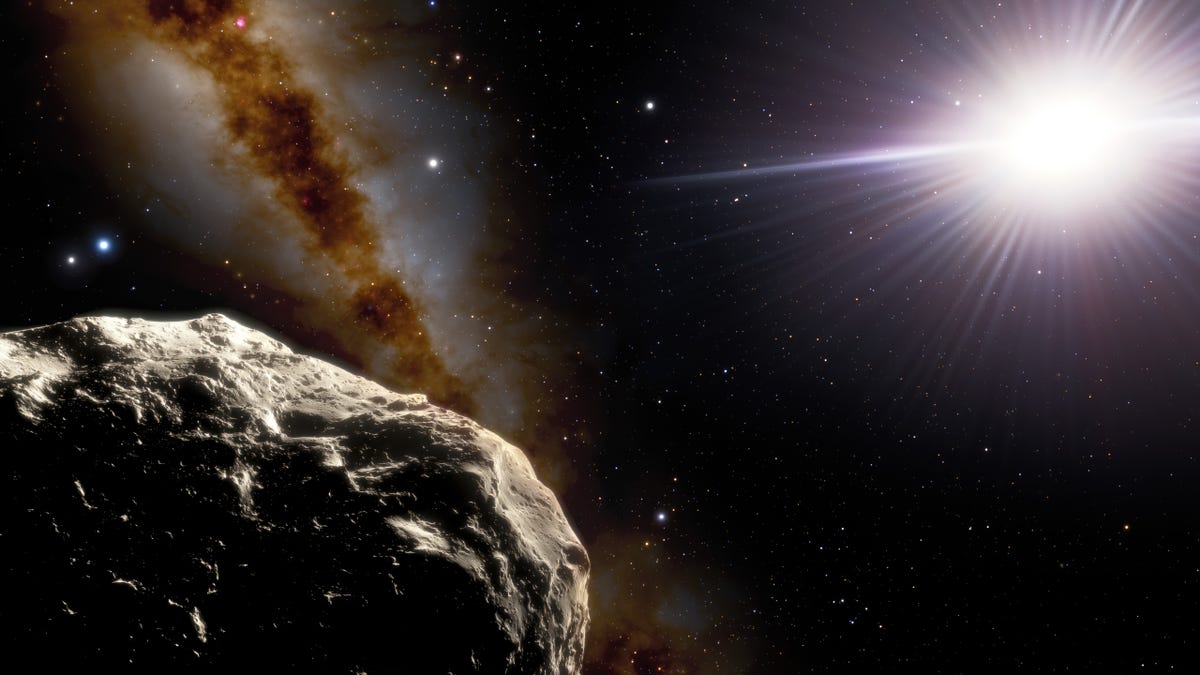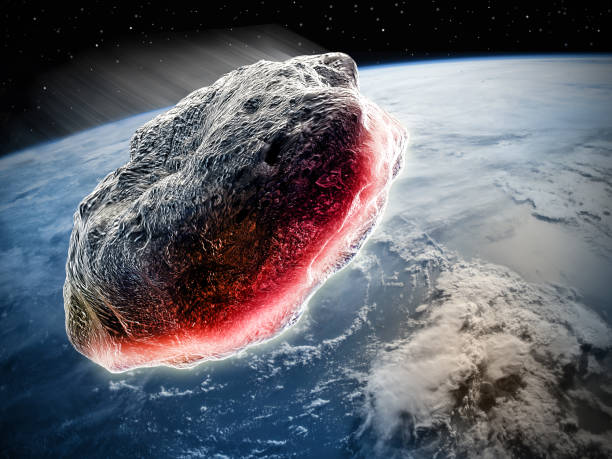It missed us this time, but it’ll be back. Meanwhile, we ought to be worried about its larger cousins lurking in the dark.

In this illustration, an asteroid is shown in the foreground in the lower left. The two bright points above it on the far left are Earth (right) and the moon (left). The sun appears on the right. NOIRLab/NSF/AURA/J. da Silva/Spaceengine
An asteroid the size of a car was discovered the same day it made a close approach to Earth, coming closer to the surface than the ring of large telecommunications satellites in geosynchronous orbit (22,236 miles, or 35,786, kilometers above us).
/2022/12/21/image/jpeg/hy9oMwef8BHVpzkZNkbSdhKvHDBSYbwFiVFrszgV.jpg)
The Arizona-based Catalina Sky Survey first spotted the space rock on Saturday, just as it was coming within about 13,000 miles (21,000 kilometers) of our planet.
If the asteroid, cataloged as 2022 YO1, were to make a direct hit on our planet, it would likely do little or no damage and burn up almost completely in the atmosphere. It could generate a heck of a fireball, though. Recall the bolide that exploded over Russia in 2013, blowing out thousands of windows but doing no other damage, was estimated to be about 40 meters across, or 10 times the size of 2022 YO1.

What’s perhaps most notable about 2022 YO1 is it is the sixth closest that astronomers have seen an asteroid fly by us this year alone. That’s an indication our surveys are getting better at spotting more of the objects in the near-Earth environment.
In fact, as The Watchers points out, seven of the 50 closest objects ever spotted on record were seen in 2022.
This might not be the last we see of 2022 YO1. Early models of its orbital path through the inner solar system indicate it will be back for another pass by Earth in 2024.
While astronomers continue to catalog and track ever more asteroids and comets, a big concern for planetary protection remains humanity’s few blind spots. We have relatively few observatories keeping watch from the Southern Hemisphere, and we also struggle to spot some objects that come from the direction of the sun.
The asteroid that exploded over Russia a decade ago came from this direction and was completely undiscovered until it exploded in the sky.

NASA hopes to address this major gap by launching the NEO Surveyor mission as soon as June 2028. Until then, eyes up!
Source: www.cnet.com





